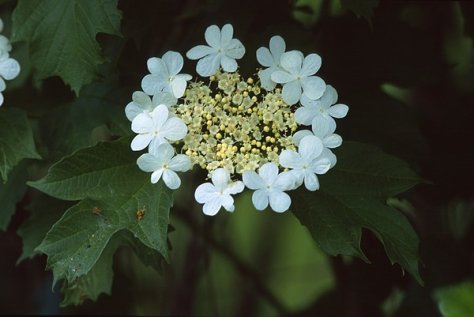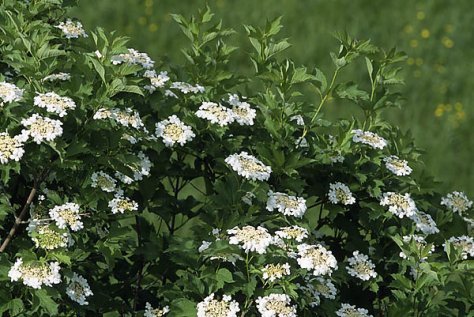Guelder rose decked in flowers
Photos: Arne Ader
Translation: Liis
Guelder rose
Guelder rose Harilik lodjapuu Viburnum opulus
Guelder rose bushes are remarkable because of their peculiar flowers. The outer flowers in the cluster, or corymb, are large, often creating a quite symmetric circle, the central ones small. The outer flowers will not set fruit because they only serve to attract insects and are sterile.
Although its Estonian name “lodjapuu” says tree, ”puu”, we have to do with a shrub growing three to four metres high, preferably growing in damp and fertile habitats as an understorey or shrub layer plant: rivers, creeks, the banks of ditches, fens … The leaves of the guelder rose are large, mostly three-lobed, with a roughly toothed edge, dull green and bare on the upper side, undersides hairy, yellow-green in colour. The leaves in autumn colours offer a beautiful palette of red hues.
The ornamental and long-lived shrub can be planted in a suitable location because the vitality of a Guelder rose lasts half a century.
Guelder rose
Ornamental species developed from the Guelder rose can be seen in parks. The inflorescences of the shrub called ”Snowball” are really showy and large but we will not find fruits on the Snowball in autumn. How to propagate them? Bend down the lowest branch of a bush to the ground, fasten in the soil with as tree peg and cover with soil. Roots will develop on the bent-down branch quite fast, then the branch can be cut free from the mother bush and planted in a suitable place…










